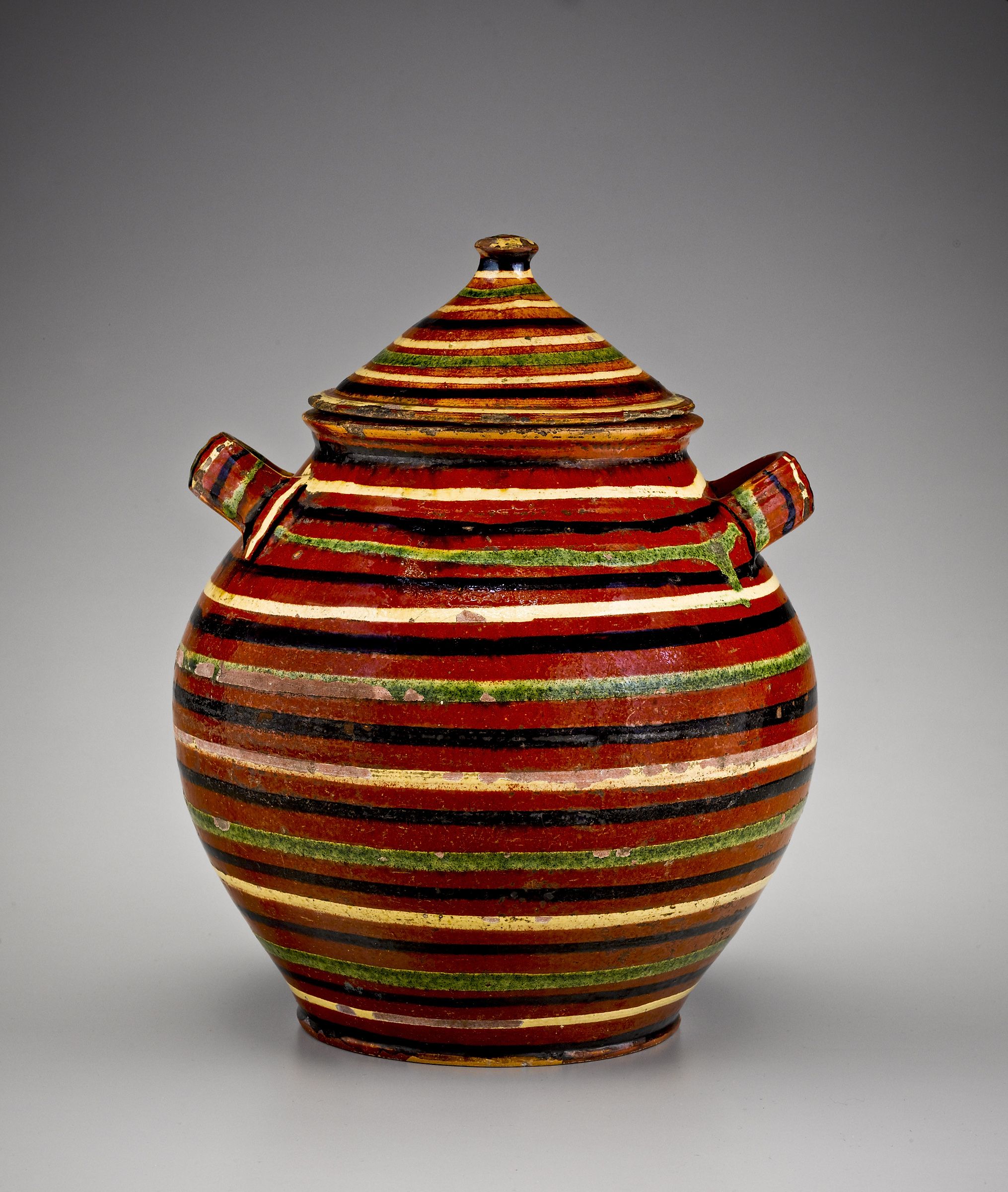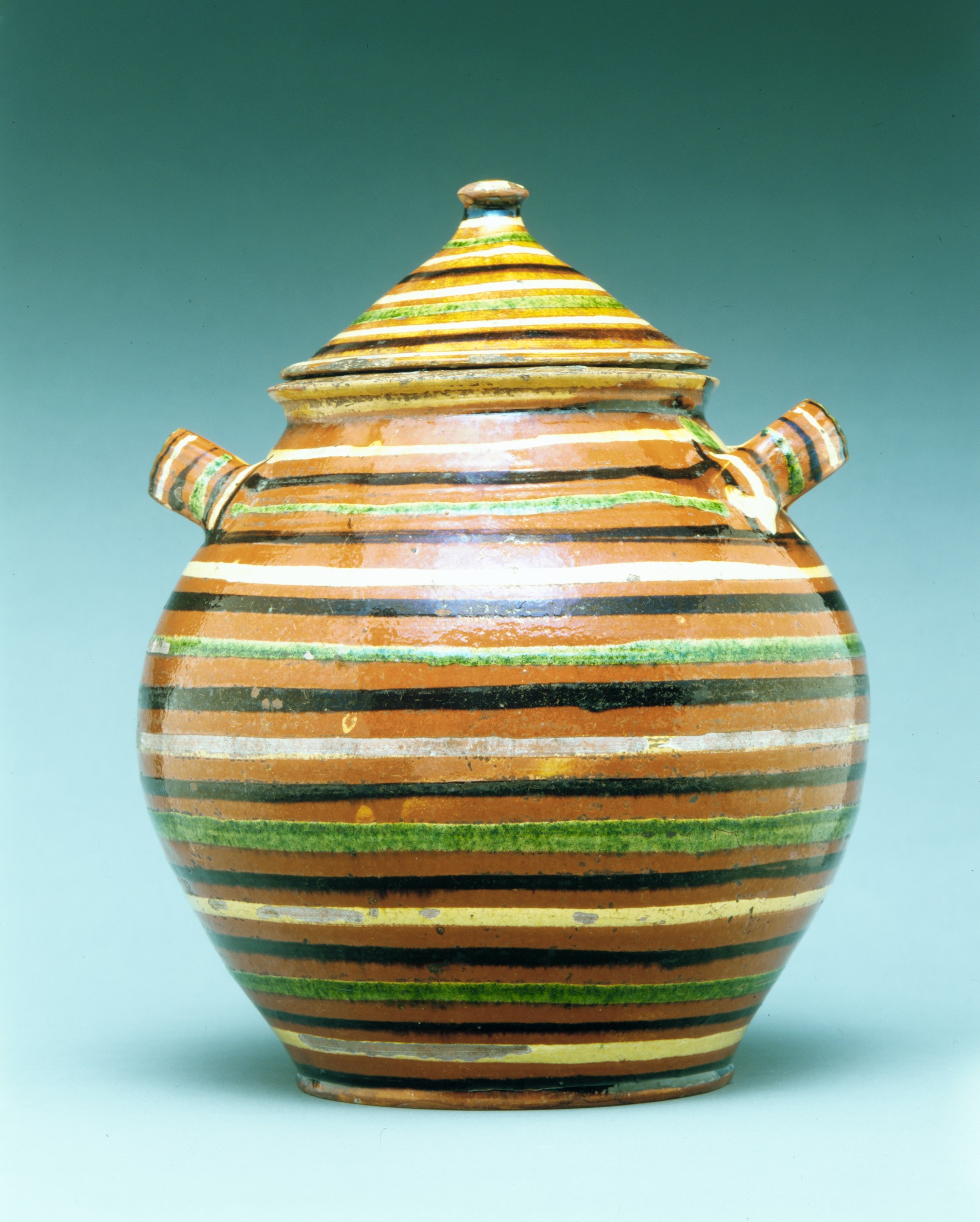Sugar pot
This sugar pot was made in the Piedmont region of the eastern seaboard, an area long home to Indigenous communities and now known as Alamance County, North Carolina. Close-knit Germanic communities settled in the area during the eighteenth century, many having traveled south from Pennsylvania in search of religious freedom and a fertile natural environment. The abundance of rich clay deposits supported the many potteries that developed in the region (and continues to sustain local potters today). This lidded sugar pot bears striking slip decoration of evenly spaced concentric lines encircling the vessel in a pattern of alternating colors. In form, material, and technique it relates to a small group of holloware from the region, yet the potter eschewed the traditional slip-trailed motifs more commonly found on Alamance County wares, such as wavy lines, dots and dashes, flowers, and four-pointed stars, in favor of this bold, graphic design. Like this example, most Alamance County wares are unsigned, but ongoing archaeological excavations are aiding researchers in determining attributions of potters and potteries.
This image cannot be enlarged, viewed at full screen, or downloaded.
This artwork is meant to be viewed from right to left. Scroll left to view more.





